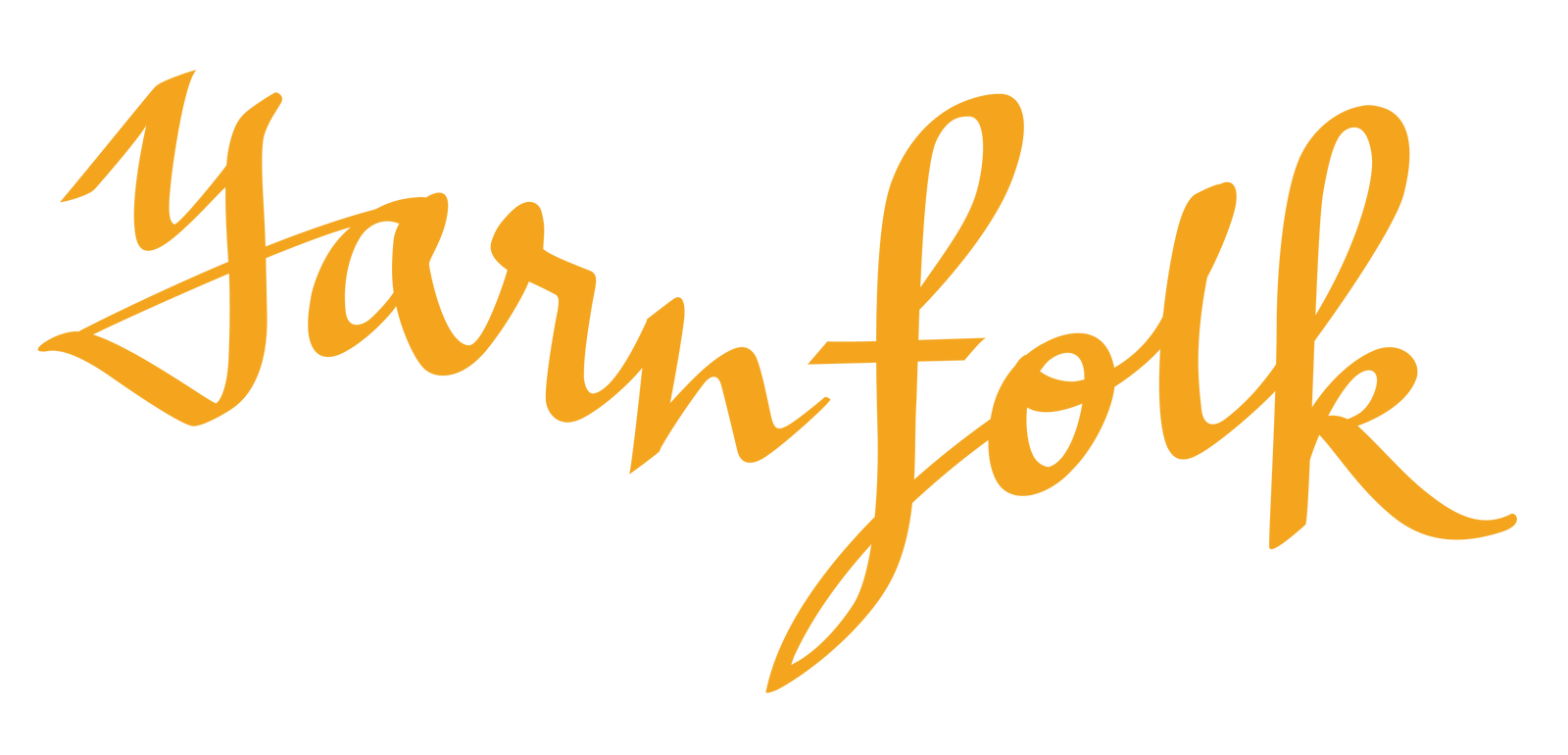Humility

One of the things I recommend to stitchers new and experienced is to check your work. Early, and often. Finding a problem right after it occurs makes it many times easier to correct.
It's also the case that sometimes a pattern will lead you astray. It's always worth reading carefully, and making sure you followed the instructions, but at times, it *is* the pattern, not you.
This leads us directly to last week's Knitter's Life Lesson. I was knitting the yoke of STRIPES!, and after the second yoke increase, I counted my stitches--even though my round had ended correctly, and there was no real reason to think anything was amiss. But I had 25 extra stitches.
When something like this happens, I strongly encourage intensive investigation prior to contacting the designer. Did I skip a step, or repeat one? Did any other knitters report similar problems in their project notes on Ravelry? Were there published errata that I'd missed? The answers in this case were no, yes, and no. I set about building a spreadsheet to support the problem with the numbers I was seeing. I checked to see what the designer (Andrea Mowry) preferred as a method of contact, and sent a note to her pattern support email, asking if she could take a look at my calculations.
And, while I had identified a previously unidentified issue, it wasn't what caused my numbers to be off. What caused my numbers to be off was that I'd relied on my memory of how I'd done left lifted increases in the past, rather than reading the pattern instructions. There are a couple of methods for executing that increase, and method used in the pattern involves an unworked slipped stitch, and the one I'd used did not--which resulted in the additional stitches.
The moral of the story? Check your work. Then check that you checked your work correctly. If you reach out for clarification, do it with humility, and if your own boneheaded-ness is the problem, respond to the clarification with sincere gratitude!
Current open hours are Monday - Friday, 7am-3:30pm, and Saturdays, 9am-3pm. In-store shopping: mask covering nose and mouth required for the duration of your visit. We continue to be mindful about making it possible to maintain social distancing in the shop.

…to learn (and do)

CURRENT CLASSES & EVENTS
Social Stitching via Zoom
Thursday, January 28, 4:00-6:00pm Social Stitching is back from winter break! What have you been working on?
https://us04web.zoom.us/j/981942707?pwd=TExyQlRPWnB3OW40QkFZRCs5aVRtQT09 OR open Zoom and enter 981-942-707 for the meeting ID
PASSWORD IS 330044.
Reminder: we've consolidated to just one Zoom event for now, but if you'd like to share project photos, chat, or share KAL progress, we'd love for you to create an account at yarnfolk.com and participate in the community we're building there. No intent to be yet another social network, but it's an option for sharing that doesn't depend on any outside platform. You can find it here.
...to anticipate

Blue Sky Fibers Woolstok is a pleasure to knit with--it comes in a terrific palette of colors, and most of the neutrals (plus a few colors) come in both 50g and 150g hanks. It's a two-ply fine highland wool with good stitch definition. I'm using it for STRIPES! (below), and have previously used it for Irene Lin's Boho Mosaic Shawl and Thea Colman's Fernet Branca sweater. If you're looking for a smaller project to try it out, Blue Sky Fiber's complimentary holiday pattern was the Royal Oak Cowl, which calls for one of the 150g hanks, or three 50g hanks.

…to inspire

Knitter Leslie created a "social knitstancing" pal in the snow last week!
The Winter issue of Knitty went live over the weekend, and there's a fun selection of free patterns. Former Washington knitter and designer Linette Grayum offers Snooze, a playful pixie hat for children and adults. (Try it in two contrasting colors of Berroco Ultra Wool.) Jeny Staiman (of Jeny's Surprisingly Stretchy Bind Off) designed a very clever pair of bias-knit gloves, Handspan. (For the recommended long-run self-striping effect, Zauberball Crazy would work, or you might try Edition 3 for a more densely-knit glove.) And then there is Todd Gocken's Halmstad, which enables you to knit a colorwork sweater in the round with NO DPNs, small circulars, magic loop, or anything else. All you have to do is cut your sweater through four steeks at the end of the knitting! I haven't ruled out giving this a go--it just looks fun.
...to stitch

Caribou Hills Hat
If you, like me, were waiting for the copper melange New York to be back in stock in order to knit one of the Caribou Hills Hat combinations that uses it, you're in luck--it's on the shelves (and in the kits) again. Colorwork hats are so much fun to knit, and the changing patterns give me a real case of the "just one more row"s.
If I were knitting this again (and I might), I would likely make a couple of small changes. First, I knit the medium size, based on the number of stitches required. However, I have much more hair than I usually do, and the large size would be more comfortable. And then I would either make a smaller bobble (these are a 7 stitch crocheted bobble), or omit them altogether, and just knit the stitch. Still, it's an enjoyable pattern, and a fairly quick knit. And blocking the New York makes me giddy; more than almost any other yarn in the shop, a good soak relaxes it, makes it bloom, and yields a soft fabric that is comfortable next to the skin. I love it!
STRIPES!
As noted above, STRIPES!, for all the simplicity of its construction, got off to a rocky start, due entirely to user error. However, once that was sorted, everything about this project has been pleasing--zipping around in giant stockinette circles, choosing an initial group of colors, deciding what order to use them in...it's all just a blast. Currently, I am just about to divide for the sleeves, and will probably devise a way to work the body and sleeve stitches concurrently (just to make maintaining the stripe sequence easier).





